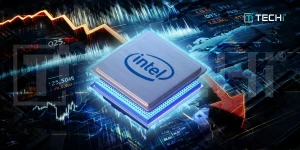Latest
5064 Stories

Musk’s DOGE Released AI Chatbot for Government General Services Administration
Musk’s DOGE has started rolling out AI Chatbot to General Services Administration (GSA) Employees. General Services Administration (GSA) manages government...

US DOJ Drops Bid To Make Google Sell AI Investment in Antitrust Case
Google has a little respite in the antitrust case. The U. S. Department of Justice (DOJ) dropped the clause to...

Microsoft Challenges OpenAI with Next-Generation AI Model
As per the news received, Microsoft is developing in-house artificial intelligence reasoning models that can compete with OpenAI and other...

SpaceX’s 8th Starship Test Flight Exploded After Multiple Engine Failures
A back-to-back failure occurred as the 8th test flight of SpaceX’s starship ran into critical problems and eventually blasted after...

OpenAI’s ChatGPT Hits 400 Million Users by Doubling Its User Base in Six Months
When OpenAI first introduced ChatGPT to the world in November 2022, it took the tech circle around the world by...

Is Trump’s Strategic Bitcoin Reserve a Game-Changer or a Political Stunt?
With Bitcoin getting a White House invite, it’s time for gold bars to move aside, as an interesting collision of...

Reddit Drops Game-Changing Tools For Content Moderation and Analytics For User
Reddit has taken a big step to make things easier for its users by launching new tools that help follow...

Google Co-Founder Larry Page’s New AI Startup Dynatomics Aims to Transform Manufacturing
The Co-Founder of Google has always done things out of the ordinary by betting big on the future, be it how Google...

Apple’s M4 MacBook Air Sticks to a Safe Upgrade with Minor Enhancements
Apple has always been a company that walks very lightly on risks, and this is evident even in the M4...

Google Reports AI Deepfake Terrorism Complaints to Australia’s eSafety Commission
In an era where artificial intelligence has almost reshaped the digital landscape, the concerning bit is it keeps dusting ugly...

Intel Wins Lawsuit as Judge Dismisses $32 Billion Shareholder Claims Over Foundry Losses
In a dramatic courtroom victory, Intel defeated a lawsuit from its shareholders who claimed the company had hidden serious problems...

Meta’s Expansion of Anti-Fraud Facial Recognition Tool in UK, a Security Measure or Privacy Risk?
Meta has, once again, stepped into the lost realm of facial recognition, which hasn't been free of controversies in the past....
Page 1 of 422